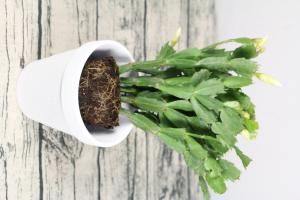Introduction
Spider plants (Chlorophytum comosum) are hardy, low-maintenance houseplants that are popular for their long, slender leaves and spider-like appearance. They are also known for being easy to grow, making them a great choice for beginners. However, one common question that many people ask is, "How much water does spider plants require?" In this article, we'll take a closer look at the watering needs of spider plants and provide some helpful tips.
Watering Spider Plants
When it comes to watering spider plants, the key is to strike a balance. On the one hand, spider plants need to be watered regularly to keep them healthy and thriving. On the other hand, overwatering can be just as damaging as underwatering. So, how much water do spider plants actually require?
Determining How Often to Water Spider Plants
One way to determine how often to water your spider plant is to check the soil. Spider plants prefer soil that is moist but not waterlogged. To check the soil, stick your finger about an inch deep into the soil. If it feels dry, it's time to water your plant. If it feels moist, you can wait a day or two before checking again.
Factors That Affect Watering Needs
There are several factors that can affect the watering needs of spider plants. For example, the size of the plant and the size of the pot can make a difference. Larger plants and pots generally require more water than smaller ones. The humidity levels in your home can also play a role. In drier environments, spider plants may need to be watered more frequently.
Signs of Underwatering
Underwatering can be just as damaging as overwatering. Some signs that your spider plant may be underwatered include dry, crispy leaves, yellowed leaves, and wilting. If you notice these symptoms, it's time to water your plant.
Signs of Overwatering
Overwatering can cause the roots of your spider plant to rot, which can be fatal. Some signs of overwatering include yellowing leaves, mushy stems, and a foul odor. If you suspect that you have overwatered your plant, it's important to address the problem immediately.
Tips for Watering Spider Plants
Here are some helpful tips for watering your spider plant:
- Water your plant with room temperature water.
- Make sure your plant's pot has adequate drainage to prevent water from pooling.
- Don't let your plant sit in standing water.
- Consider using a well-draining soil mix to prevent overwatering.
- If you're unsure about how much water your plant needs, err on the side of underwatering rather than overwatering.
Conclusion
In conclusion, spider plants are a great choice for anyone looking for an easy-to-grow houseplant. When it comes to watering spider plants, the key is to strike a balance between moist and waterlogged soil. By checking the soil regularly and paying attention to the needs of your plant, you can ensure that your spider plant thrives in its environment. With a little care and attention, your spider plant will reward you with long, healthy leaves and a striking appearance.

 how many times do yo...
how many times do yo... how many planted tre...
how many planted tre... how many pine trees ...
how many pine trees ... how many pecan trees...
how many pecan trees... how many plants comp...
how many plants comp... how many plants can ...
how many plants can ... how many plants and ...
how many plants and ... how many pepper plan...
how many pepper plan...




























